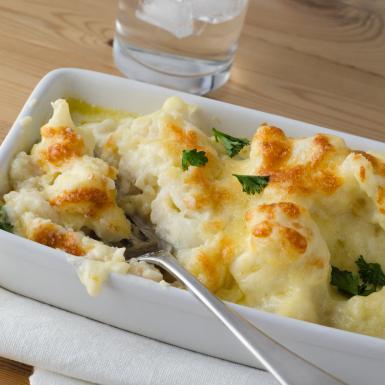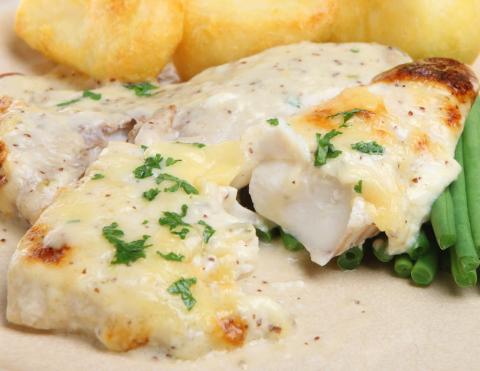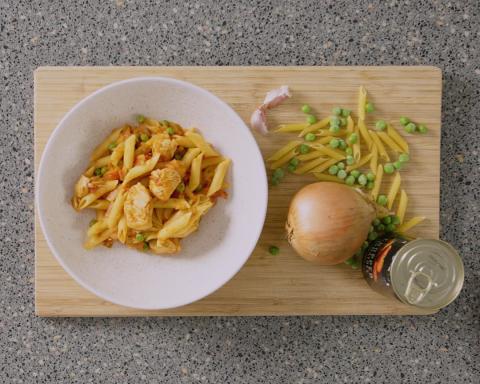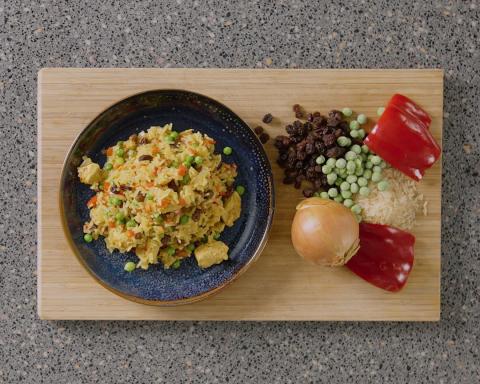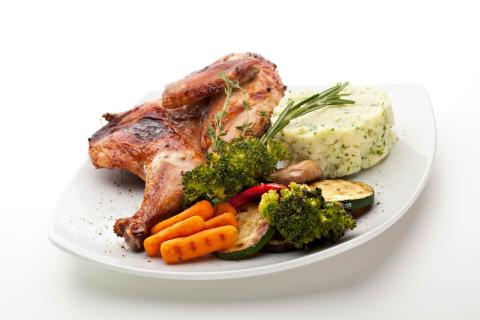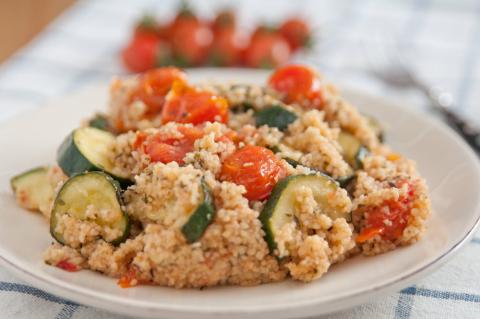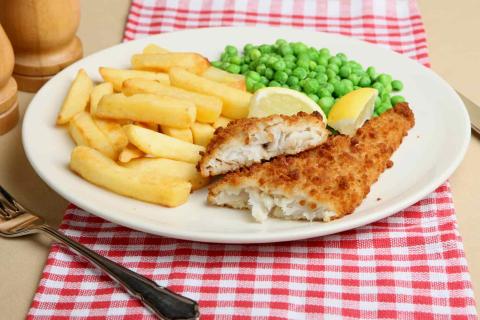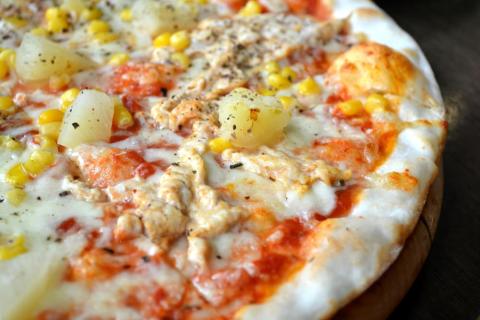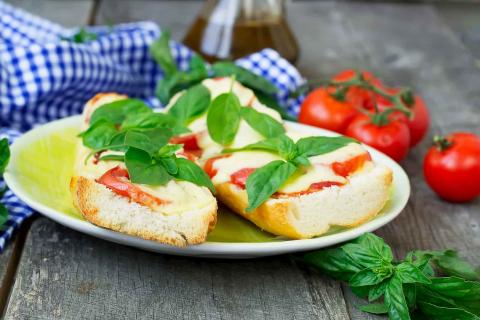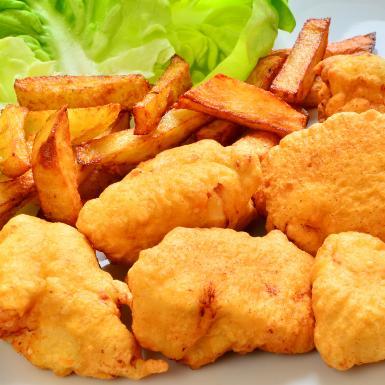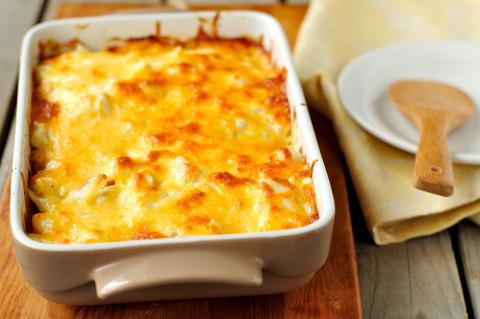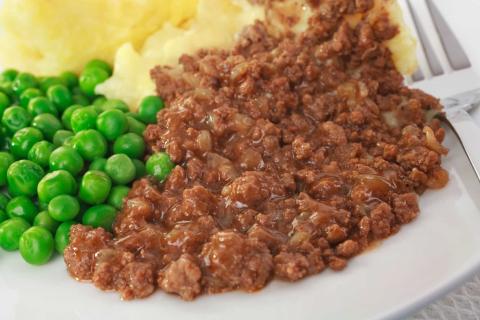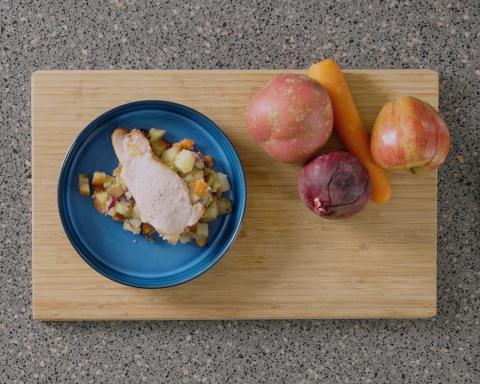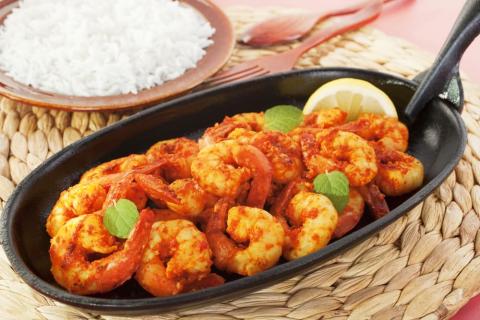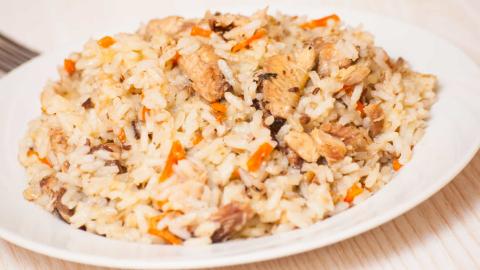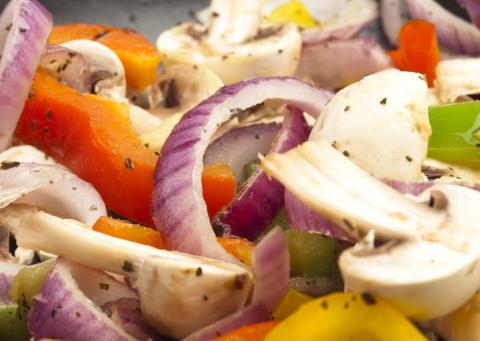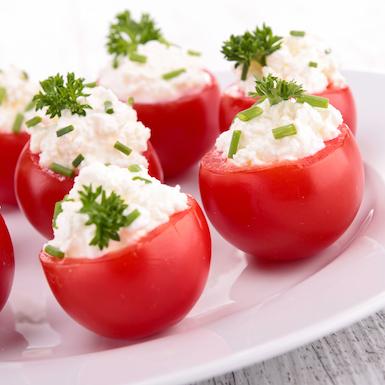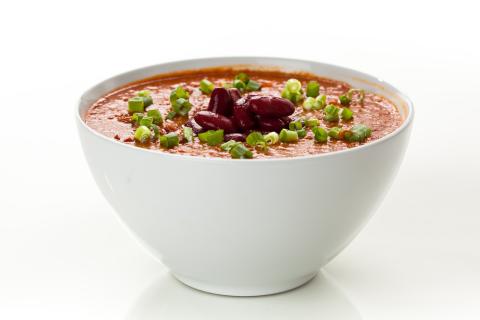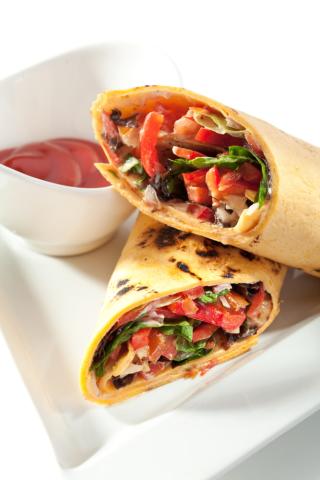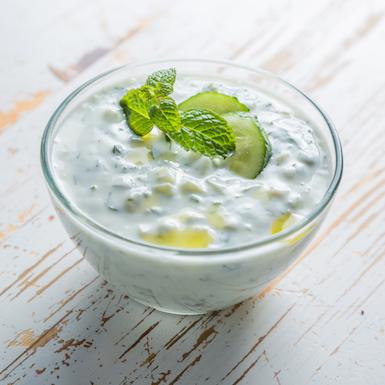- 2 Tins (185g) Tuna In Brine
- 6 Medium Sized (720g) Potatoes
- 1 Frozen Cups (160g) Peas
- 2 Eggs
- 3 Cups (160g) Breadcrumbs
- 8 Leaves (40g) Lettuce
- 4 (340g) Tomatoes
- ½ (180g) Cucumber
- 1 (160g) Red Pepper
Ingredients
Allergy Disclaimer
Always check the label of each ingredient for allergy warnings.
Method
- Peel the potatoes and cut them into cubes. Boil them until they're soft then mash them. Allow to cool.
- Drain the tuna and, with the peas, add to the mash. Beat the eggs in a bowl and gradually add to the mash mixture to bind it together. Leave some egg in the bowl to coat the fish cakes.
- Divide the mixture into 8 and shape into a ball then flatten.
- Place breadcrumbs on a plate.
- Coat each fish cake in the remaining egg and roll in the breadcrumbs.
- Grill on each side for 5 minutes until golden brown and hot throughout.
- Wash and prepare salad and serve with fishcakes.
Time Saver Tips
It'll be quicker to buy ready made breadcrumbs than make them yourself. You can also save time by preparing the fish cakes in advance. They can be stored in the fridge for a day before cooking or you can always freeze them.
Cost Saver Tips
You can make a large batch of these and freeze them for a day when you're short on time – just pop them in the oven.
Tips for Kids
Why not involve the kids in shaping and coating the fish cakes? They love getting their hands messy!
Nutritional Information
Based on a single serving of 495g (% of an adult's reference intake)
Energy
430 kcals ( 22 %)
1,806 kJ ( 22 %)
Fat
1 g ( 5 %)
Saturates
71.8 g ( %)
Sugar
9.4 g ( 10 %)
Salt
1.5 g ( 25 %)
Detailed nutritional information
| Per 100g | Per 495g serving | |
|---|---|---|
| Energy Kcals | 87 | 430 |
| Energy Kj | 365 | 1,806 |
| Protein | 5.7 g | 28.2 g |
| Total Fat | g | g |
| Saturated Fat | 0.2 g | 1 g |
| Carbohydrates | 14.5 g | 71.8 g |
| Total Sugars | 1.9 g | 9.4 g |
| NSP Fibre | 1.4 g | 6.9 g |
| Sodium | 115 mg | 569 mg |
| Salt | 0.3 g | 1.5 g |
Find out about nutritional labelling
Nutrition labels on the front of packaging
- Most of the big supermarkets and many food manufacturers display nutritional information on the front of pre-packed food.
- Front of pack nutrition labels provide information on the number of grams of fat, saturated fat, sugars and salt and the amount of energy (in kJ and kcal) in a serving or portion of a recipe.
- The labels also include information about reference intakes (expressed as a percentage) which are guidelines about the approximate amount of particular nutrients and energy required for a healthy diet.
- The colour coding tells you at a glance if the food has high (red), medium (amber) or low (green) amounts of fat, saturated fat, sugars and salt.
- The more greens on the label, the healthier the choice
- Amber means neither high nor low, so you can eat foods with all or mostly ambers on the label most of the time.
- Reds on the label means the food is high in that nutrient and these are the foods we should cut down on. Try to eat these foods less often and in small amounts.
Food shopping tips
If you’re trying to decide which product to choose, check to see if there's a nutrition label on the front of the pack. This will help you to quickly assess how your choices stack up. You will often find a mixture of red, amber and green colour coding for the nutrients. So when you're choosing between similar products, try to go for more greens and ambers and fewer reds if you want to make a healthier choice.
 Activities & Play
Activities & Play Behaviour
Behaviour Childcare
Childcare Development & Growing Up
Development & Growing Up Family, Friends & Relationships
Family, Friends & Relationships Feeding Your Baby
Feeding Your Baby Food & Eating
Food & Eating Health & Safety
Health & Safety Mental Health & Wellbeing
Mental Health & Wellbeing Money & Work
Money & Work Online Behaviour & Safety
Online Behaviour & Safety Pregnancy & First Days
Pregnancy & First Days School & Education
School & Education Sleep
Sleep













